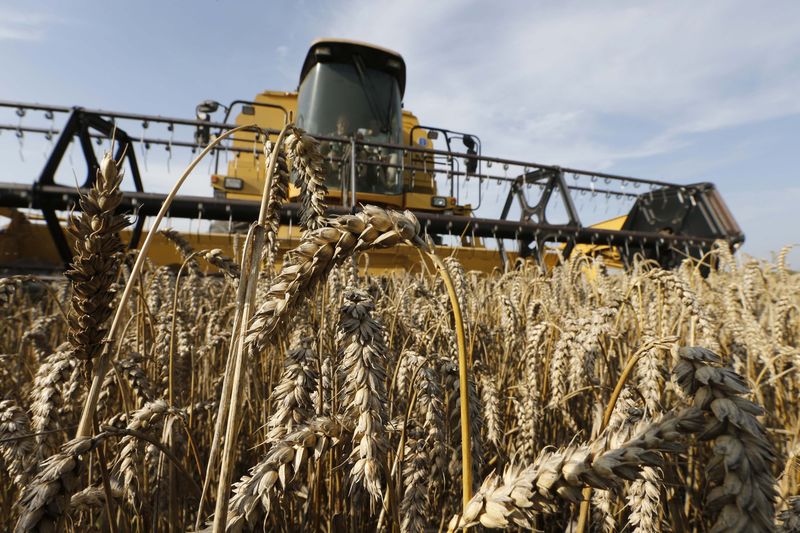(Repeats story published on Sunday with no changes)
By Rod Nickel
WINNIPEG, Manitoba, Sept 18 (Reuters) - The swaying durum crops on Dave Marzolf's farm look lush and even, bearing full kernels of the wheat used to make pasta.
On a closer look though, Marzolf's durum kernels are infected with fusarium, a disease that produces a toxin known as vomitoxin and has forced him to sell the crop for animal feed.
"It's garbage," Marzolf said by phone from Central Butte, Saskatchewan. "Big crop, poor quality - now what?"
Durum, which thrives in desert-like conditions of dry, hot days and cool nights, is processed into a coarse product called semolina that is used to make pasta. Canada, the world's top durum exporter, ships much of it to Italy, Algeria and Morocco.
Vomitoxin and other problems resulting from torrential rain have also spoiled crops in France, the European Union's biggest durum exporter.
North America's huge durum harvest has weakened prices by one-quarter year over year, but industry officials have said they are likely to climb as contaminated supplies are harvested.
Canada's 6.8 million tonne durum crop is its largest on record, topping last year's harvest by 1.4 million. The 2.5 million tonne U.S. crop is its biggest in six years, exceeding last year's harvest by 250,000 tonnes.
Much of it, however, is unsuited for food production, after fusarium spread in humid conditions. Millers aim to limit vomitoxin levels, which can affect flavor and processing performance and pose a risk to humans if ingested in high amounts.
"It wouldn't surprise me if one-third of the (Canadian) crop would not be able to move into milling or food channels," said Jerry Klassen, Winnipeg manager of crop trader GAP SA Grains and Produits.
But pasta eaters may not need to swallow higher prices. World durum supply is expected to rise by 1.3 million tonnes to 46.7 million in 2016/17, exceeding demand of 37.9 million, according to Agriculture and Agri-Food Canada.
Top-quality durum sold at Saskatchewan grain elevators for C$251.87 per tonne as of Sept. 7, up more than $2 per tonne from a week earlier, but 24 percent lower than a year ago, according to the provincial government.
Supply is enough now, but prices are likely to rise as the harvest progresses, Klassen said. Already the price spread has widened between the top quality grade and third best to C$100 per tonne, depending on the location in Canada, he said. Normally, the spread is about C$30.
In North Dakota, the biggest U.S. durum grower, quality looks good based on current samples, but is likely to drop as vomitoxin-infected samples arrive from the northwestern part of the state, said Erika Olson, marketing specialist at North Dakota Wheat Commission.
Cash prices in the state, down 14 percent year over year, are likely to strengthen this autumn as farmers hold off on selling high-quality supply, she said.
"The question is, what is the level of the problem and how will the mills and elevators be able to deal with that," said Jim Meyer, president of St. Louis-based Italgrani USA, which owns mills and grain elevators. "There's just a lot of unknown there."
That uncertainty has nudged cash bids higher for U.S. durum and sharp increases may occur in certain locations, said Courtney Boryski, a trader at Nebraska-based Hansen-Mueller.
North American millers, including Treehouse Foods THS.N and Ardent Mills, a joint venture of Cargill Inc CARG.UL , CHS Inc CHSCP.O and ConAgra Foods Inc (NYSE:CAG) CAG.N , can mix varying qualities to meet the U.S. standard for vomitoxin. But "you can only blend so much," Olson said.
France's farm ministry last month estimated the 2016 durum harvest at 1.4 million tonnes, down 20 percent. Quality problems in central France would mean that production suitable for food may only reach 1 million tonnes, one French durum broker said.
"We are going to export a lot less from France," he said.
